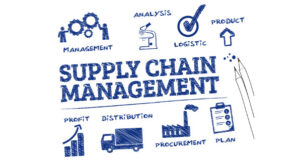Welcome to this post on what is Supply Chain Management, via Afrokonnect. The Supply Chain Management consists of the transportation of goods from its raw components to its final stage when it arrives as a finished product that can be used by the consumer.
For newbies, you may think that I am writing an article on Logistics but you may be shocked to notice that Logistics is just a component of the supply chain. The Supply Chain Management isn’t isolated but relies on various factors to operate such as:
- An efficient business strategy
- A specialized software
- Collaboration among all parties involved
The SCM is such a complex undertaking and collaboration as well as co-operation is very important to ensure efficiency, risk management, and quick adaptation to change.
Steps by which the Supply Chain Management operate?
According to the CIO, we presently have 5 steps by which the Supply Chain Management categories:
1) The Planning Stage:
This stage is very important as the company sits down and with the aid of accurate data – establish their supply chain. This stage is very important as the company decides if their supply chain is the most efficient and can deliver the needs of their customers while meeting the company goals.
2) Sourcing:
At this stage the company ensures that it has the most reliable supplier to provide it with the goods and services to manufacture a product. This stage also ensure that the company and the supplier establish and manage their relationship; they also monitor key processes such as:
- Ordering
- Receiving
- Authorizing payments to the supplier, Etc.
Note: This stage is crucial to throughout the entire supply chain management process as the supply chain collaboration starts as this stage.
3) Manufacturing:
This stage begins the process for the manufacturing of goods and various processes are observed such as:
- Scheduling of the production date
- Testing of products
- Ensuring that the products meets their requirements
- Packaging of products
- Storage and distribution of products
In this stage, multiple machines are used in larger companies and this have increased the use of IoT and AI machines hence making manufacturing more efficient.
4) Delivery of products to the final customer:
This is the most important stage as the manufacturing of goods and all its procedures is a waste if the goods can’t be efficiently transported to the final customer. During the Covid-19 pandemic, more emphasis was placed on doorstep delivery and it doesn’t look to be slowing down anytime soon.
To ensure more efficiency the supply chain leaders has to ensure that they are closely in collaboration with the customer service to ensure that they meet the customer requirements. This stage will also sow how important warehouse management systems are important to the Supply Chain Management.
5) Return System:
At this stage a network is created to ensure that defective, excess and unwanted products are returned to the organization. This stage will also include various elements such as stock control and the transportation management.
Types of Supply Chain Management Software
1) Lean Inventory Tools:
When we talk about lean production, it is not a very mind-tasking issue as the company only creates what they need at that particular time. This type of software is based on projections and if the projection is very accurate – it causes more efficiency for business. Also, to ensure true efficiency the SCM Software has to be integrated with sales systems as access to data ensures better productivity.
Read Also:
- Top 5 reasons why Bitcoin is good for long-term investment
- Management of Crypto Asset For Making Better Profits
2) Supplier Management tool:
The Supplier management tool allows an organization to have access to all its suppliers and provides them in-depth analysis on how each supplier has affected their supply chain. Through the use of a vendor management software which creates a digital profile for each supplier accompanied with indepth analysis on their effect to the effectiveness of the supply chain and management of each supplier on key metrics.
3) Order Processing tool:
This tool provides business with immediate data anytime in order to curb the time and manpower wasted on the processing of purchase orders (PO) and outstanding invoices.
With the aid of this tool, it provides the finance department with the necessary data to compile a report on issued POs and outstanding invoices hence ensuring that they have a better understanding of the organization operations when presenting their weekly/monthly report.
4) Demand Projection tool:
This tool prepares an organization for the future i.e. it provides various projections to an organization to ensure that they are prepared for potential sales and not reactive. This tool is properly utilized when combined with a vendor management system as it ensures that the vendor being selected is one which will provide the best pricing and quality of goods.
5) Logistics tools:
This is the most common tool in the Supply chain management software as various communication and tracking tools are available in the market for organizations to choose the ones that suites tem the most. This is very important as a good logistics tool reduces the chance of the organization having an inefficient communication channel hence avoiding a drastic slowing of their operations and losing their market to other competitors.
6) Collaboration tools:
This tool ensure smooth communication between the different parties involved in the production and distribution of products in order to boost effectiveness and efficiency of the brand.
Having a portal to handle interaction among these parties ensures that there is not any space for unproductivity due to poor communication. Once an organization is with a proper collaboration tool that suite its operations – It ensures that each participant in the company’s operation have an avenue to provide updates on the company’s operation and have the same access to data.
7) Warehousing management tool:
This tool deals with various procedures attached to the logistics of warehousing items such as:
- Warehouse receiving the products
- Tracking the location of various warehouses and the goods stored
- Ensuring that all warehouses being used are on the database to avoid theft of goods.
8) Security Management tool:
This tool prevents data breaches which has become a major source of worry and ruined many organizations. This tool ensures that the company’s data and operation activities are kept safe and secure.
Conclusion about Supply Chain Management

In the past the supply chain process is periodic but with the rapid growth of development, it is sure to become a continuous process backed with a tighter co-operation between the planning and execution phase.
In the nearest future, the SCM will start to demand greater speed and accuracy if your organization still wants to be relevant in the market. Hence you must make sure that your supply chain can withstand the test of time by using an excellent SCM system.















